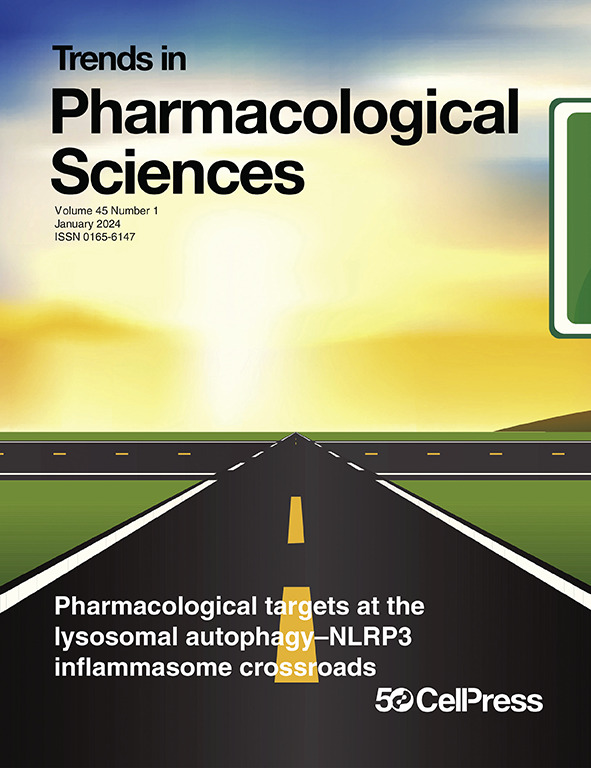照亮小白蛋白中间神经元的可塑性。
IF 19.9
1区 医学
Q1 PHARMACOLOGY & PHARMACY
Trends in pharmacological sciences
Pub Date : 2025-08-01
Epub Date: 2025-07-05
DOI:10.1016/j.tips.2025.06.006
引用次数: 0
摘要
神经元网络依赖于兴奋性神经元和抑制性神经元活动之间的平衡,每一种神经元在调节大脑回路和信号处理的活动流方面都有不同的作用。Selten等人最近的研究揭示了表达小白蛋白(PV)的中间神经元如何根据活性变化调整其抑制输入,揭示了一种基于神经肽的机制。本文章由计算机程序翻译,如有差异,请以英文原文为准。
Shining light on parvalbumin interneuron plasticity.
Neuronal networks rely on a balance between the activity of excitatory and inhibitory neurons, each having distinct roles in regulating the flow of activity across brain circuits and signal processing. Recent work by Selten et al. uncovers how parvalbumin (PV)-expressing interneurons adjust their inhibitory inputs in response to activity changes, revealing a neuropeptide-based mechanism.
求助全文
通过发布文献求助,成功后即可免费获取论文全文。
去求助
来源期刊
CiteScore
23.90
自引率
0.70%
发文量
132
审稿时长
6-12 weeks
期刊介绍:
Trends in Pharmacological Sciences (TIPS) is a monthly peer-reviewed reviews journal that focuses on a wide range of topics in pharmacology, pharmacy, pharmaceutics, and toxicology. Launched in 1979, TIPS publishes concise articles discussing the latest advancements in pharmacology and therapeutics research.
The journal encourages submissions that align with its core themes while also being open to articles on the biopharma regulatory landscape, science policy and regulation, and bioethics.
Each issue of TIPS provides a platform for experts to share their insights and perspectives on the most exciting developments in the field. Through rigorous peer review, the journal ensures the quality and reliability of published articles.
Authors are invited to contribute articles that contribute to the understanding of pharmacology and its applications in various domains. Whether it's exploring innovative drug therapies or discussing the ethical considerations of pharmaceutical research, TIPS provides a valuable resource for researchers, practitioners, and policymakers in the pharmacological sciences.

 求助内容:
求助内容: 应助结果提醒方式:
应助结果提醒方式:


